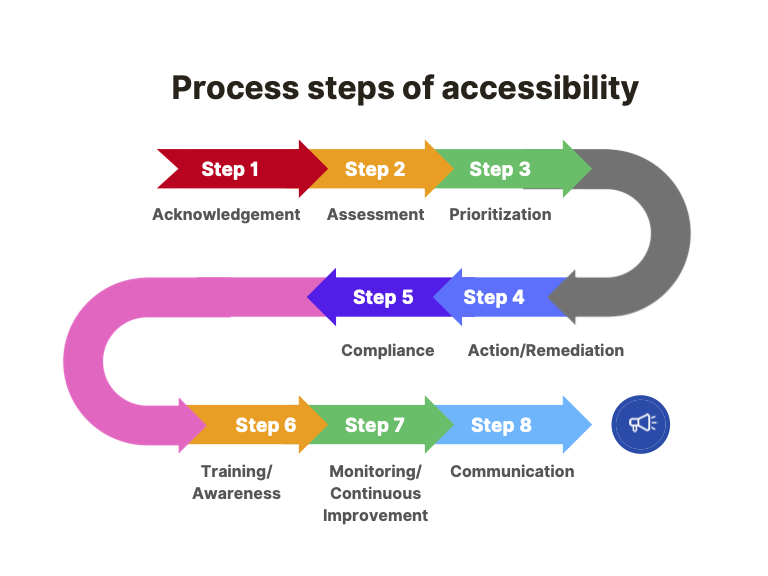Discover practical steps for businesses to enhance accessibility, ensuring inclusivity and compliance for over 15% of the global population.
It is unacceptable to treat accessibility as an afterthought in this digital era. It’s essential for a welcoming society since it ensures that people with all kinds of abilities can use and benefit from the same resources. Disability affects over 15% of the world’s population of approximately 8 billion people. In other words, 1.3 billion people are directly affected, according to the World Health Organization. This is a staggering number that is only going to increase due to reasons like an aging population.
However, companies’ reactions to accessibility reports differ greatly, revealing their diversity efforts, compliance with regulations, and concern for their brand’s reputation. In this blog article, we will explore the common methods that companies use to address accessibility concerns. We will also leave you with a question that will make you think about how your organization promotes diversity.
A guide to making things more accessible
The first step on the path to accessibility is acknowledgment. Reports are frequently acknowledged by businesses via a variety of outlets, including social media and customer support channels as well as through accessibility website audits. The assessment stage, which comes after acknowledgment, is when companies identify the scope of the issue and ascertain the resources required for a solution. The third step is prioritization; problems that seriously impede access are escalated.
Next, in order to improve digital accessibility, action and remediation are essential. This may include software updates, alterations to the physical environment, or adjustments to service policies. Standards such as the Web Content Accessibility Guidelines (WCAG) frequently serve as guidelines for this phase. Law and regulation compliance is also of major importance, with companies working to fulfil regulatory requirements in many regions.
Following compliance, training and awareness initiatives ensure that staff members are prepared to assist and further accessibility activities. Succeeding that, monitoring is required to continuously improve operations, closely observing the success of plans, and then leading to implementing necessary modifications. Notwithstanding, in order to maintain a strong reputation and good customer relations during this process, communication with stakeholders about plans to improve accessibility is crucial.

The current state of the field
Tech companies like Apple and Microsoft are usually at the forefront of accessibility innovation when it comes to creating designs and features that are inclusive of all users. On the other hand, the retail and healthcare industries aren’t always up to speed, which can lead to problems with accessibility and even legal consequences.
Regardless of these obstacles, awareness of accessibility’s significance is on the rise across all sectors, serving as a key differentiation in the market and ensuring legal compliance.
An urge for companies to act
It is evident that progress has been achieved when we consider the different approaches to handle accessibility reports. The WebAIM Million 2023 report provides a comprehensive analysis of the accessibility of the top 1,000,000 home pages, revealing that in 2023 96.3% of these pages had detectable WCAG 2 failures, a slight improvement from 96.8% in 2022. This indicates a slow but steady progress in reducing accessibility errors on the web.
The importance of web accessibility is further underscored by the spending power of people with disabilities, which is substantial. According to a 2020 annual report produced by Return On Disability, businesses have an opportunity to unlock a market of $13 trillion by embracing disability inclusion.
However, there is still a long way to go. Any company worth its salt has to ask, Where do you fit in the landscape of accessibility?
Do you lead the pack when it comes to making your products and services more accessible? Is juggling these endeavours with other company responsibilities a constant struggle for you, or are you in a bit of a bind, knowing they’re important but not sure what to do next?
Compliance and staying out of legal hot water are not the only concerns here. The key is to make sure everyone can access the internet and recognize the worth of every person. Businesses should evaluate their accessibility policies and think about how they might help create a more inclusive society.
Every company can contribute, whether it’s through raising the quality of digital platforms, educating employees, or working together with others in the industry. Asking where your company stands and what the next steps are will help you navigate the path to accessibility, which is an ongoing process of improvement.

Comments